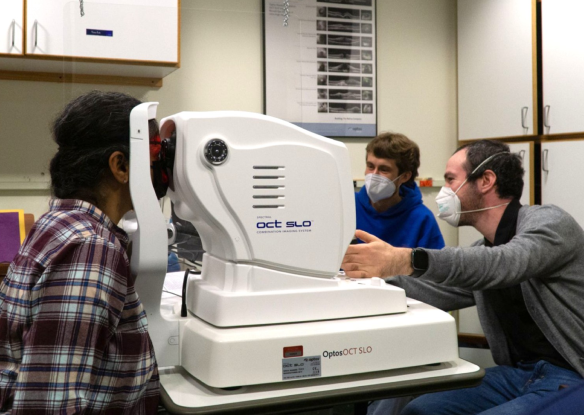
- Principal Investigator:
- Christopher Tyler
The multidisciplinary goal was to develop an integrated conceptualization of the mid-level encoding of 3D object structure from multiple surface cues. Psychophysical studies showed that depth continuity is a prerequisite for facilitation of Gabor target detection in the context of flanking Gabors, and that, similarly, surface continuity in purely disparity-defined slanted surfaces was strongly enhanced in distributed patch detections as a function of stimulus duration in this dual discrimination task. The unprecedented dips of performance reduction in the component psychometric functions was captured in a computational model based on a novel Leaky Drift Diffusion Theory that we developed for the underlying neural signals, which can serve as an analytic basis for the time course of all neural decision processes. The time course of depth surface perception was studied in a coordinated trio of psychophysical, neurophysiological and functional imaging studies, showing that the perceptual processing of disparity and integration of 3D surface information across depth cues has time courses of several seconds, attesting to complexity of the neural processing hardware. Three complementary computational modeling projects from three collaborating laboratories showed how surface reconstruction could be accomplished across the typically sparse depth information available, and integrated among sparse, incommensurate cue modalities. The team was led by the lead PI Prof. Christopher Tyler (Smith-Kettlewell); a PI on the Subcontract with Carnegie Mellon University was Prof. Tai-Sing Lee.

